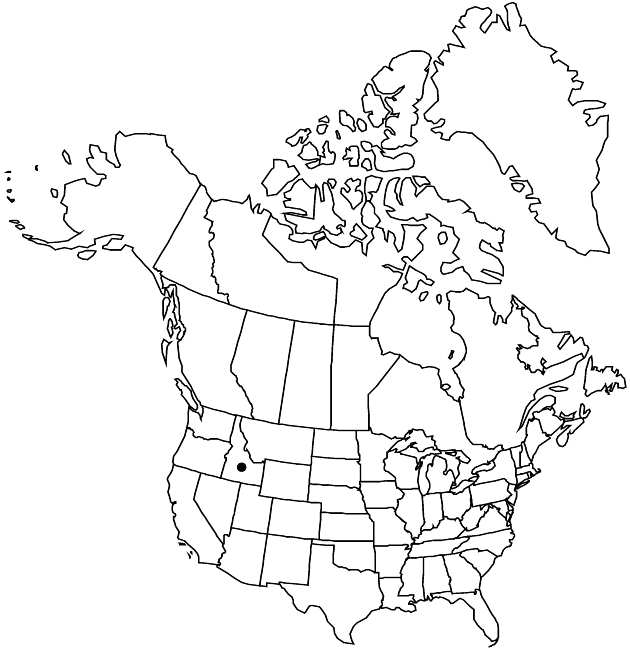Pyrrocoma insecticruris
Muhlenbergia 1: 7. 1900.
Plants 25–60 cm. Stems 1–5, erect to curved-ascending, red-tinged, glabrous or sparsely tomentulose distally, eglandular. Leaves: basal petiolate, blades oblanceolate to elliptic, 100–300 × 10–50 mm, margins sharply serrate to undulate or entire, glabrous or villoso-ciliate on petioles and midribs; cauline short-petiolate to sessile, moderately reduced distally, bases clasping, margins ciliate, apices obtuse to acute, faces sparsely villous, eglandular. Heads 3–10 in narrow, elongate, racemiform arrays. Peduncles 1–8 cm. Involucres hemispheric, 10–18 × 15–28 mm. Phyllaries in 2–3 series, loose, green with whitish base, linear-lanceolate, 9–13 mm, subequal, margins entire, ciliate, faces villous proximally. Ray florets 15–23; corollas 8–15 mm. Disc florets 35–50; corollas 5–9 mm. Cypselae narrowly oblong, 4-angled, 3–6 mm, faces striate, densely sericeous; pappi tawny, 6.5–9.5 mm. 2n = 36.
Phenology: Flowering Jul–Aug.
Habitat: Gravelly moist meadows, grassy shrubby flats
Elevation: 1200–1700 m
Discussion
Pyrrocoma insecticruris has been treated as a subspecies of P. integrifolia; it differs from that species in its villous, serrate leaves, long-pedunculate heads, loose, linear-lanceolate phyllaries, sericeous cypselae, westerly distribution, and 2n = 36 chromosome number (R. A. Mayes 1976).
Selected References
None.
